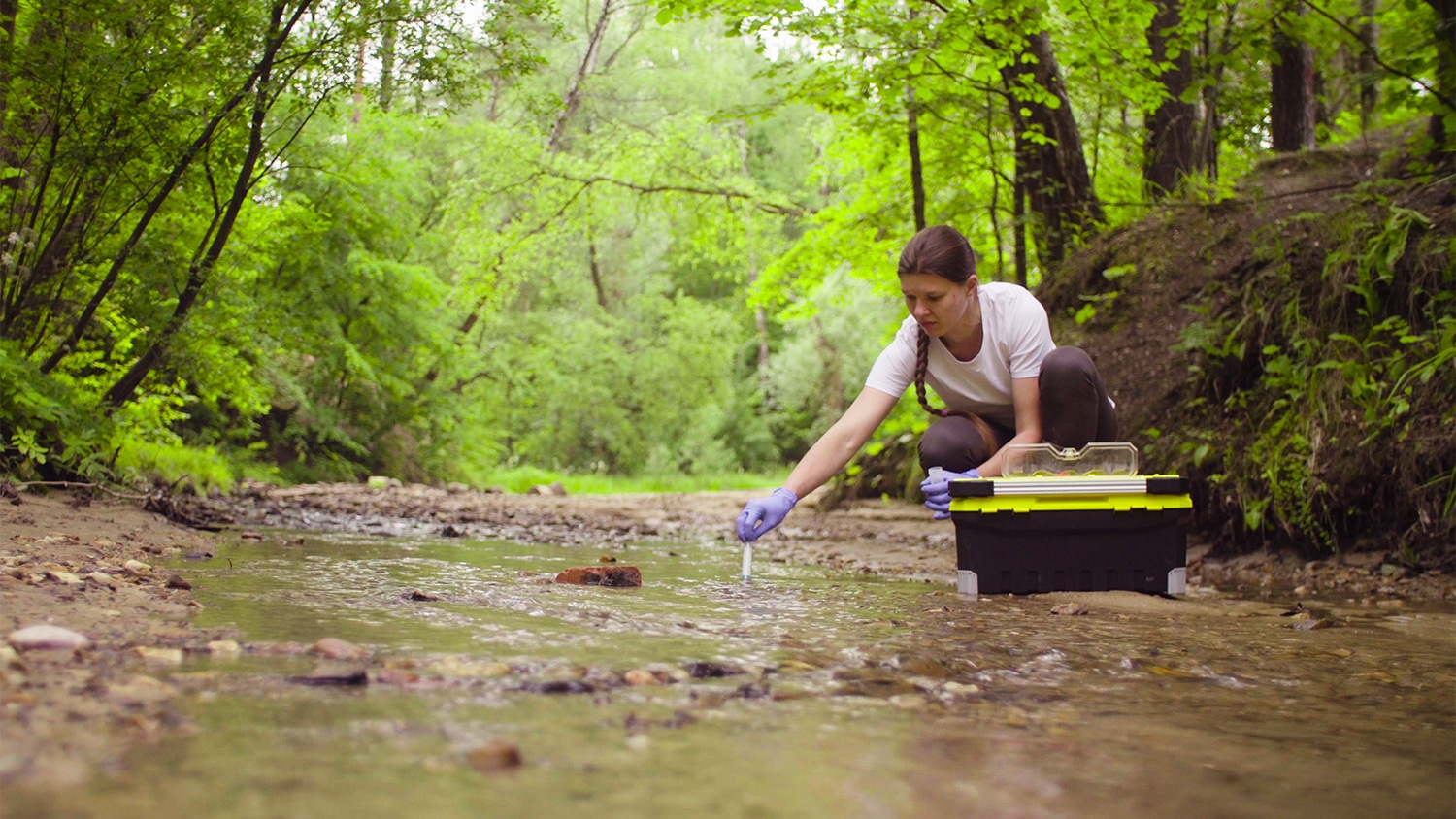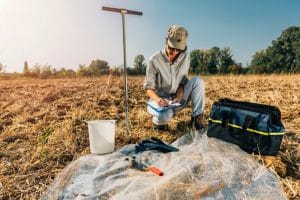14 Environmental Studies Summer Programs for High School Students
As the global community faces unprecedented environmental challenges, nurturing an early interest in sustainability and environmental science cannot be overstated. For high school students passionate about making a difference in the world, participating in environmental studies summer programs offers a unique opportunity to dive deep into this critical field.
These programs provide hands-on experiences in various aspects of environmental science and foster critical thinking, research skills, and a profound understanding of ecological issues. Whether you’re drawn to the complexities of climate change, the intricacies of marine biology, or the principles of sustainable design, there’s a program out there to suit every interest.
This article explores 14 summer programs in environmental studies for high school students designed to educate and inspire young leaders. These programs stand out for their commitment to excellence, offering students the chance to learn from experts, engage in meaningful research, and connect with like-minded peers from around the globe.
Environmental Studies Summer Programs for High School Students- Urban Ecology and Design
1. Brooklyn College STEM Research Academy
- Location: Brooklyn, New York
- Subfield: Urban Aquatic Ecology
- Eligibility: High school students
- Important Dates: Six weeks; application deadline not specified.
The Brooklyn College STEM Research Academy stands out among environmental studies summer programs for high school students. It offers an enriching opportunity for those interested in urban aquatic ecology.
This six-week pre-college program is designed to immerse students in the practical aspects of scientific research. It allows them to work closely with professionals, undergraduates, and fellow high schoolers who share a similar passion for science and the environment.
Participants engage in comprehensive lab and field research, including data collection and analysis, providing a solid foundation in ecological study and research methodology. This program enhances participants’ understanding of environmental challenges and equips them with valuable skills in scientific inquiry and problem-solving.
Successful completion of the academy opens doors to an intensive summer laboratory research internship, further solidifying the program’s role in fostering the next generation of scientists and environmentalists.
2. UC Berkeley College of Environmental Design
- Location: Berkeley, CA
- Subfield: Urban Design, Sustainable City Planning
- Eligibility: High school students
- Important Dates: Specific dates and application deadlines are not provided.
The UC Berkeley College of Environmental Design (CED) prominently features summer programs in the landscape of environmental studies for high school students. It offers a variety of immersive and educational experiences tailored to those interested in the intersections of architecture, urban planning, and sustainable design.
CED’s summer offerings blend rigorous academic study and hands-on design practice to introduce students to the foundational concepts and contemporary challenges in environmental design.
Through these programs, high school students have the unique opportunity to work alongside renowned faculty and professionals, engage in real-world projects, and utilize the state-of-the-art facilities at UC Berkeley.
This exposure enhances their academic portfolios and deepens their appreciation for sustainable environmental design, equipping them with the knowledge and skills to pursue further education and careers in related fields. The CED summer programs stand as a testament to UC Berkeley’s commitment to nurturing the next generation of leaders in environmental design.
Environmental Studies Summer Programs for High School Students- Climate, Geology, Earth Systems, Ecology
3. Lamont-Doherty Earth Observatory Secondary School Field Research Program (SSFRP)
- Location: Palisades, New York
- Subfield: Climate, Geology, Earth Systems, Ecology
- Eligibility: High school students, undergraduate students, and science teachers
- Important Dates: July 8 – August 16. Application Deadline: March 1.
The Lamont-Doherty Earth Observatory Secondary School Field Research Program (SSFRP) distinguishes itself as a cornerstone among environmental studies summer programs for high school students. It aims to bridge the gap between academic knowledge and real-world environmental challenges.
This intensive six-week course immerses participants in laboratory and fieldwork, delving deep into climate, geology, earth systems, and ecology. It uniquely positions high school students alongside undergraduate students and science teachers in a collaborative research project, fostering a tiered mentoring system that enriches the learning experience.
The program is intellectually and physically demanding, often involving long lab hours and challenging field conditions. However, it rewards participants with a $1,400 stipend, a testament to its commitment to educating and valuing its young researchers’ contributions.
Through hands-on work, critical thinking, and team collaboration, SSFRP offers a comprehensive introduction to the scientific research process, making it a vital stepping stone for those considering futures in environmental science and related fields.
4. TeenNat
- Location: Pepperwood Preserve, California
- Subfield: Ecology, Research
- Eligibility: High school students entering 10th, 11th, or 12th grade
- Important Dates: June 18 – August 1. Application Deadline: April 21.
TeenNat is a distinctive and engaging summer program for high school students in environmental studies. It emphasizes hands-on research and a personal connection to the natural world.
This six-week program is specifically tailored for students entering the 10th, 11th, or 12th grade, providing them with a unique opportunity to conduct fundamental scientific research in botany and ecology.
Participants in TeenNat become citizen scientists, learning about scientific inquiry, data collection, and the identification of plants and animals, all while contributing to actual research databases. The program takes place in the scenic surroundings of Pepperwood Preserve, California, where students are also taught hiking safety and the importance of environmental conservation.
TeenNat not only aims to make science personal and less theoretical but also strives to instill a sense of stewardship and a deep appreciation for the natural environment among its participants. By encouraging students to hike, observe, and engage directly with their surroundings, TeenNat offers a profound educational experience beyond the classroom, fostering a connection to nature and understanding the critical role science plays in understanding and preserving the natural world.
5. Cornell University’s Ecology and Evolutionary Biology
- Location: Online
- Subfield: Ecology, Evolutionary Biology
- Eligibility: High school students
- Important Dates: Three weeks, Application Deadline: May 7.
Cornell University’s Ecology and Evolutionary Biology program is a premier option among environmental studies summer programs for high school students. It offers an online, three-week immersive course designed to introduce participants to the fundamental concepts and contemporary issues in ecology.
This course stands out for its comprehensive coverage of interactions between organisms and their environments at populations, communities, and ecosystems, effectively preparing students for advanced study and careers in environmental science.
Through a curriculum that spans population dynamics, disease ecology, biodiversity, invasive species, and the impacts of global change, the program addresses significant issues facing humanity in the 21st century from an ecological perspective.
It broadens students’ understanding of ecological principles and engages them in applying these principles to solving environmental sustainability challenges. By participating in Cornell University’s program, high school students gain valuable insights into the theory and practice of ecology and evolutionary biology, setting a solid foundation for their future endeavors in environmental studies and related disciplines.
6. Youth Engaged in Sustainable Systems (YESS)
- Location: Highline and Riverview School Districts, Washington
- Subfield: Natural Resources, Conservation, Ecological Restoration
- Eligibility: High school students
- Important Dates: Not specified.
The Youth Engaged in Sustainable Systems (YESS) program is a shining example of an environmental studies summer program for high school students designed to foster a deep understanding of and engagement with sustainable environmental practices.
YESS explicitly targets students enrolled in the Highline and Riverview School Districts. It offers a paid internship experience that combines hands-on restoration projects with an introduction to green career paths.
Participants are deeply immersed in activities that replace invasive plant species with native ones, directly contributing to the ecological restoration of local environments. This not only serves to protect and enrich local biodiversity but also provides students with a tangible sense of the impact they can have on their surroundings.
The program partners with professionals from organizations such as the Snoqualmie Indian Tribe, U.S. Forest Service, and King County, ensuring students gain insight from experienced practitioners in natural resources, conservation, and land management.
Environmental Studies Summer Programs for High School Students- Polar and STEM fields
7. Joint Science Education Project (JSEP) In-Person Program
- Location: Greenland
- Subfield: Polar and STEM fields
- Eligibility: High schoolers entering their junior year
- Important Dates: Three weeks, Application Deadline: January 31.
The Joint Science Education Project (JSEP) In-Person Program is an international highlight among environmental studies summer programs for high school students. It is designed to foster a global understanding and commitment to environmental stewardship and scientific exploration.
This unique three-week experience is a collaborative effort between Greenland, Denmark, and the United States. It aims to educate and inspire the next generation of professionals in polar sciences and STEM fields. High school students entering their junior year have the rare opportunity to engage in hands-on scientific research in the breathtaking landscapes of Greenland.
The program’s structure is meticulously designed to comprehensively explore environmental science topics, including climate science, ice coring, and glaciology, through field methods and research projects conducted in Kangerlussuaq and at the U.S. Summit Station atop the Greenland Ice Sheet.
The immersive nature of JSEP provides students unparalleled access to some of the planet’s most critical and changing environments. The program covers all travel expenses, emphasizing its commitment to accessible and impactful scientific education.
Through this experience, participants gain knowledge and a profound appreciation for the complexities of environmental issues and the importance of international collaboration in addressing global challenges.
8. LINC
- Location: Marin County or San Francisco, CA
- Subfield: STEM
- Eligibility: Must be enrolled in a high school from specified counties
- Important Dates: June 13, 2023 – July 28, 2023. Application Deadline: March 12.
LINC, situated in the dynamic environments of Marin County and San Francisco, California, emerges as a pivotal program among environmental studies summer programs for high school students. It is designed to immerse participants in the multifaceted world of environmental science and policy.
This program uniquely addresses the educational and career pathways in STEM fields, focusing on underrepresented communities and offering students a substantial stipend upon completion.
With its operation spanning over six weeks during the summer, LINC not only equips students with the necessary knowledge and skills in environmental studies but also instills a deep sense of responsibility towards environmental conservation and sustainability.
The eligibility criteria require students to be enrolled in high schools within specific counties, ensuring that the program directly benefits the local community and addresses the educational needs of the area.
Environmental Studies Summer Programs for High School Students- Environmental Issues
9. Yale Young Global Scholars | Solving Global Challenges (SGC)
- Location: Yale University, Connecticut
- Subfield: Environmental Issues, UN’s Sustainable Development Goals
- Eligibility: At least 16 years old by the start of the session, current sophomore or junior
- Important Dates: Three sessions in June and July; applications typically open from November to early January.
The Yale Young Global Scholars (YYGS) Solving Global Challenges (SGC) session is a pivotal initiative within the array of environmental studies summer programs for high school students, focusing on fostering a nuanced understanding of the myriad environmental issues that impact global systems.
This session, part of the broader YYGS offerings, is tailored for highly motivated students eager to enhance their critical thinking skills and engage deeply with the complexities of environmental sustainability and its intersections with social, economic, and political factors.
Participants in the SGC session are introduced to the United Nations’ Sustainable Development Goals (SDGs) as a framework for understanding and addressing global challenges, with a particular emphasis on environmental sustainability.
Through an interdisciplinary approach, students explore current environmental crises, such as climate change, sustainability in the face of industrial growth, and the socio-economic dimensions of environmental action.
10. Environmental Studies Summer Youth Institute (ESSYI)
- Location: Hobart and William Smith Colleges, New York
- Subfield: Interdisciplinary Environmental Problems
- Eligibility: High school students entering their junior and senior years
- Important Dates: July 14 – July 27.
The Environmental Studies Summer Youth Institute (ESSYI) stands out among environmental studies summer programs for high school students, designed to engage participants in a comprehensive exploration of environmental issues through a multidisciplinary lens.
Hosted by Hobart and William Smith Colleges, ESSYI offers a two-week, college-level experience that immerses students in the complexities of environmental challenges from scientific, social, economic, philosophical, ethical, and political perspectives.
The program is geared towards talented high school students entering their junior and senior years or those about to graduate, allowing them to delve into current environmental problems using interdisciplinary techniques.
ESSYI aims to broaden students’ understanding of environmental issues and encourages them to think critically about solutions and their potential roles in addressing these global challenges. With a curriculum that includes fieldwork in the beautiful natural areas of the Adirondack region, collaborative class sessions, and a larger group project, ESSYI fosters an environment of active learning and discovery.
11. Brown Environmental Leadership Lab: Rhode Island
- Location: Providence, RI
- Subfield: Climate Change
- Eligibility: High school students
- Important Dates: Two weeks. Application Deadline: May 10, 2024.
The Brown Environmental Leadership Lab (BELL): Rhode Island is a pivotal and inspiring entry among environmental studies summer programs for high school students, aimed at those who wish to delve deep into the pressing issues of climate change and environmental sustainability.
Hosted in the scenic environs of Providence, Rhode Island, this two-week, hands-on program at Brown University offers participants a chance to explore environmental leadership through a blend of classroom sessions and field experiences at various sites in the State.
The curriculum is meticulously designed to engage students with climate change’s scientific underpinnings, exploring effective communication strategies and leadership skills necessary to drive environmental action.
Participants are encouraged to think critically about the impact of climate change at both local and global scales, fostering a sense of responsibility and urgency to act towards a more sustainable future. Through this immersive experience, students gain a deeper understanding of environmental issues and enhance their leadership skills, preparing them to be change-makers in their communities.
12. Stanford Young Investigators
- Location: Stanford, CA
- Subfield: Earth and Environmental Sciences
- Eligibility: High school students
- Important Dates: Summer, specific dates, and application deadlines are not provided.
The Stanford Young Investigators program is an exemplary initiative within the framework of environmental studies summer programs for high school students. It offers a unique platform for passionate individuals to engage directly with cutting-edge research in Earth and environmental sciences.
Hosted by the prestigious Stanford Doerr School of Sustainability, this program invites high school scholars to spend their summers immersed in the dynamic research environment of Stanford’s campus.
Since its inception in 2004, the program has welcomed over 300 young minds into its labs, providing them with firsthand experience in scientific research under the guidance of graduate scholars, postdocs, and lab managers.
Participants are introduced to various research methodologies and topics and become part of a community that values curiosity, innovation, and the pursuit of knowledge. Weekly activities, including talks, lab tours, and field trips, further enrich the experience, offering a comprehensive overview of the field and fostering a sense of camaraderie among participants.
13. Columbia Climate School in the Green Mountains
- Location: Green Mountains, Vermont
- Subfield: Climate and Sustainability
- Eligibility: High school students
- Important Dates: Two weeks; specific dates and application deadlines not provided.
The Columbia Climate School in the Green Mountains is an exceptional offering within the environmental studies summer programs for high school students, designed to empower and educate the next generation on climate change.
This two-week transdisciplinary program, led by faculty and researchers from the esteemed Columbia Climate School, invites students to explore the multifaceted aspects of climate and sustainability.
Through a rich combination of seminars, small group discussions, field excursions, and hands-on projects, participants are encouraged to discover their passion for climate action and learn essential skills like critical thinking and problem-solving.
The program’s setting in the picturesque Green Mountains provides a perfect backdrop for learning about real-world climate solutions, sustainable development goals, and the complexities of global and local climate policies.
Environmental Studies Summer Programs for High School Students- Oceanography
14. American University’s High School Summer Scholars – Oceanography
- Location: Online
- Subfield: Oceanography
- Eligibility: High school students
- Important Dates: Four weeks; application deadline not specified.
American University’s High School Summer Scholars – Oceanography program is an essential offering among environmental studies summer programs for high school students, providing an unparalleled opportunity to explore oceanography’s vast and complex world.
This online, four-week course is tailored to give students a comprehensive overview of oceanography’s chemical and physical aspects, delving into how these scientific principles affect marine life and global economies.
This program stands out because of its international perspective, encouraging students to consider the interconnectedness of the world’s oceans and the critical environmental challenges they face, such as pollution, acidification, and overfishing.
Participants are introduced to scientific methodologies, including geography, plate tectonics, climatology, and meteorology, equipping them with the tools to understand and potentially mitigate the impact of human activity on marine ecosystems.
What are the benefits of interdisciplinary approaches to Environmental Studies Summer Programs for High School Students?
Interdisciplinary approaches in environmental studies have manifold benefits, especially when integrated into environmental studies summer programs for high school students.
These programs underscore the complexity of environmental issues, which span various disciplines such as biology, chemistry, sociology, and political science. An interdisciplinary approach equips students with a comprehensive understanding of how these diverse fields interconnect and impact environmental challenges.
This broad perspective is crucial for developing practical solutions to inherently multidimensional problems like climate change, conservation, and sustainable development. By participating in programs emphasizing this approach, students learn to analyze environmental issues from multiple angles, fostering critical thinking and problem-solving skills that are invaluable in higher education and beyond.
Furthermore, these programs encourage collaboration and communication among students from different academic backgrounds, reflecting the collaborative efforts needed to address global environmental concerns.
What Skills Can Be Gained from Environmental Studies Summer Programs for High School Students?
Environmental studies summer programs for high school students offer a rich tapestry of skill development opportunities that are both broad in scope and deep in impact. These programs are designed to immerse students in the complexities of environmental science, fostering a range of skills crucial for academic and professional success.
Firstly, participants gain hands-on scientific research skills, learning to design experiments, collect data, and analyze results, which are foundational to any scientific inquiry. Critical thinking and problem-solving abilities are sharpened as students tackle real-world environmental issues, developing innovative and feasible solutions.
Communication skills are also a key focus. Students must often present their findings to peers and professionals, enhancing their ability to articulate complex concepts clearly and persuasively.
Moreover, these programs cultivate an interdisciplinary mindset, encouraging students to draw connections between diverse fields such as biology, ecology, sociology, and policy, mirroring the multifaceted approach needed to address global environmental challenges. Collaborative projects and activities nurture leadership and teamwork abilities, preparing students to take on roles in future environmental endeavors.
Finally, participating in these programs increases environmental literacy, equipping students with the knowledge to engage in informed environmental advocacy and decision-making. Through theoretical learning and practical application, students emerge from these programs with a deeper understanding of environmental studies and versatile skills applicable across various disciplines and careers.
How Can Environmental Studies Summer Programs for High School Students Enhance College Application?
Participating in environmental studies summer programs for high school students can significantly enhance a college application, demonstrating a student’s commitment to learning, personal initiative, and dedication to addressing global environmental issues.
These programs provide students with unique opportunities to engage in hands-on research, interdisciplinary education, and real-world problem-solving, showcasing their readiness to tackle college-level work and their interest in contributing positively to the world.
Such experiences underscore a student’s ability to work collaboratively in diverse teams, think critically about complex problems, and communicate effectively, highly valued skills in higher education.
Furthermore, involvement in these programs reflects a student’s passion for environmental studies and willingness to invest time and effort into exploring this interest deeply. This can help differentiate applicants in competitive college admissions, signaling academic ability and character traits like curiosity, resilience, and leadership potential.
Conclusion
The environmental studies summer programs for high school students outlined in this listicle represent a remarkable spectrum of opportunities to engage with the environmental challenges of our time.
From the depths of the ocean to the peaks of glaciers, these programs span a variety of ecosystems and disciplines, reflecting the interconnectedness of the planet we call home. By participating in these programs, students gain invaluable knowledge and skills and join a community of young environmental advocates poised to make a difference.
The experiences garnered in these programs go beyond academic enrichment; they are about shaping a more sustainable future through informed action and leadership. As students return to their communities, they carry memories, friendships, and a renewed sense of responsibility towards the environment.
The journey through these programs is a testament to the power of education to inspire change, preparing students for college and a lifetime of environmental stewardship.



















































